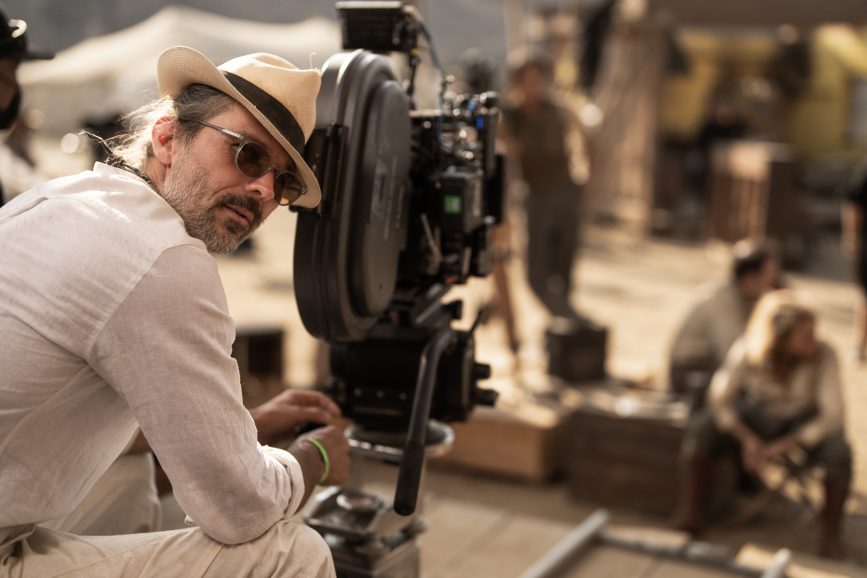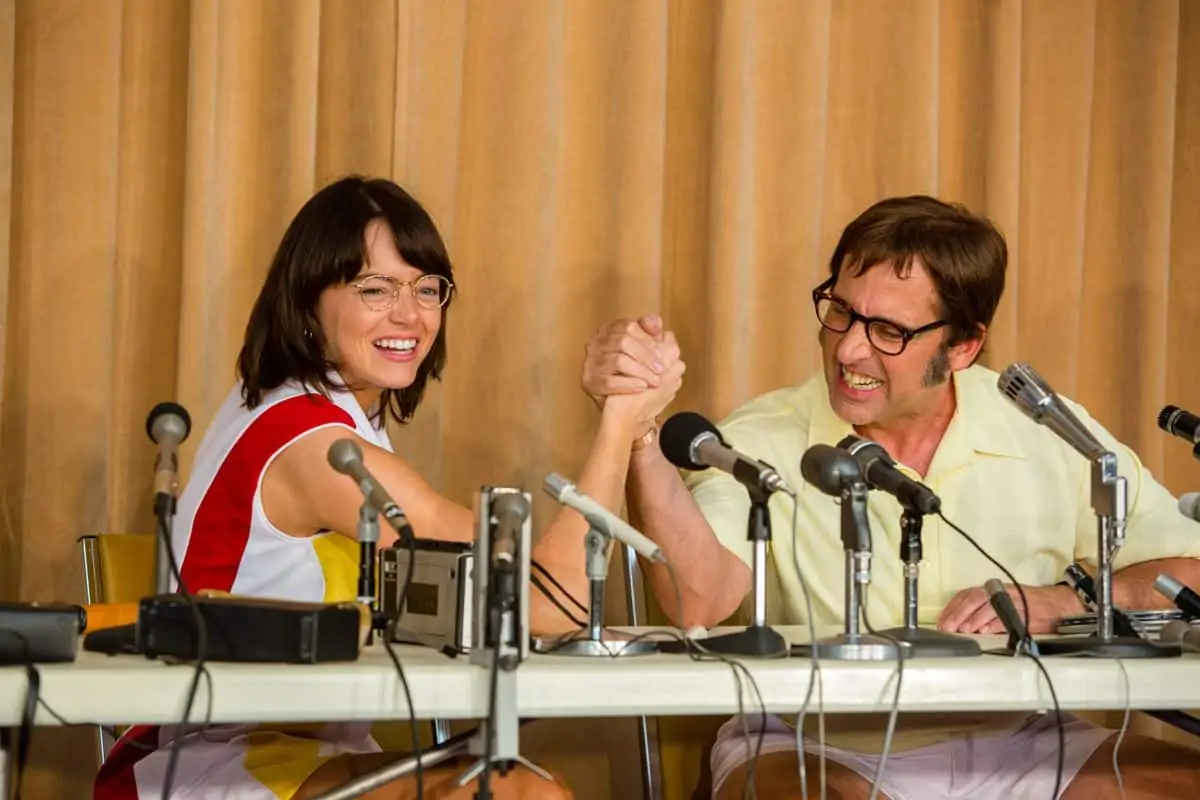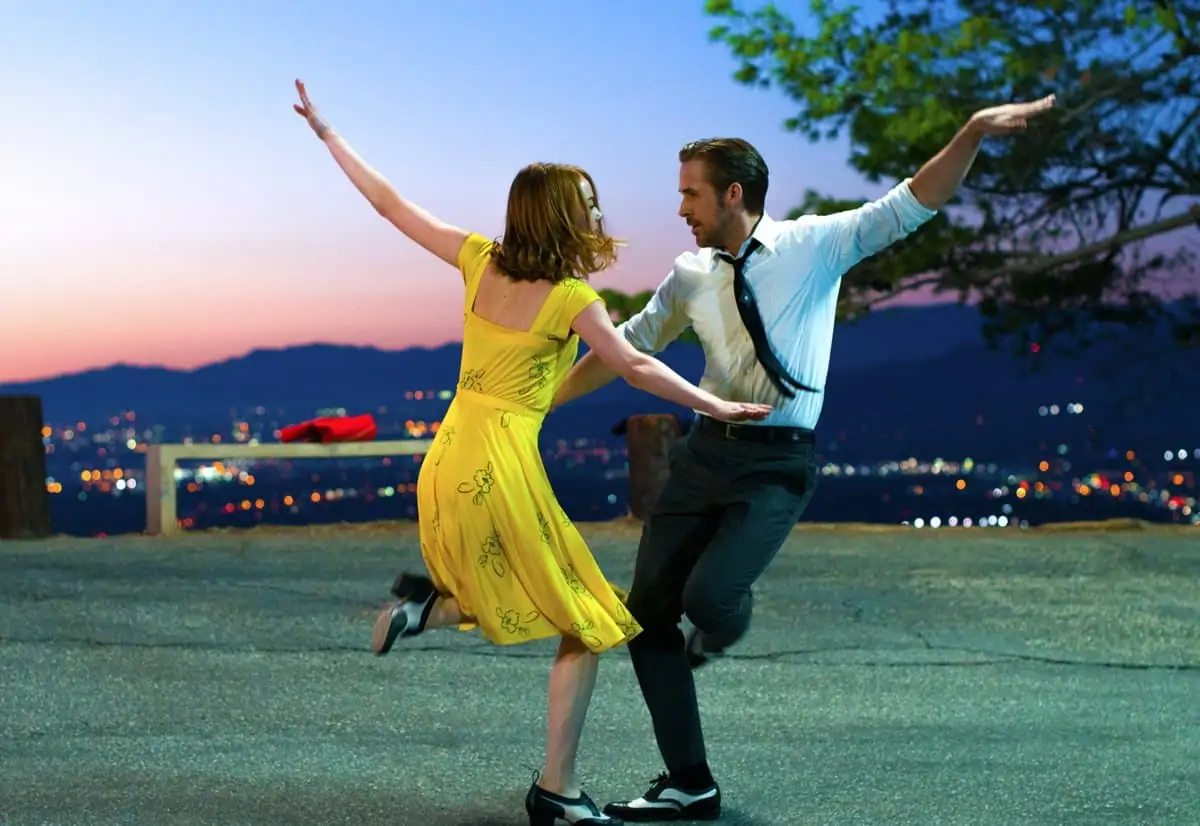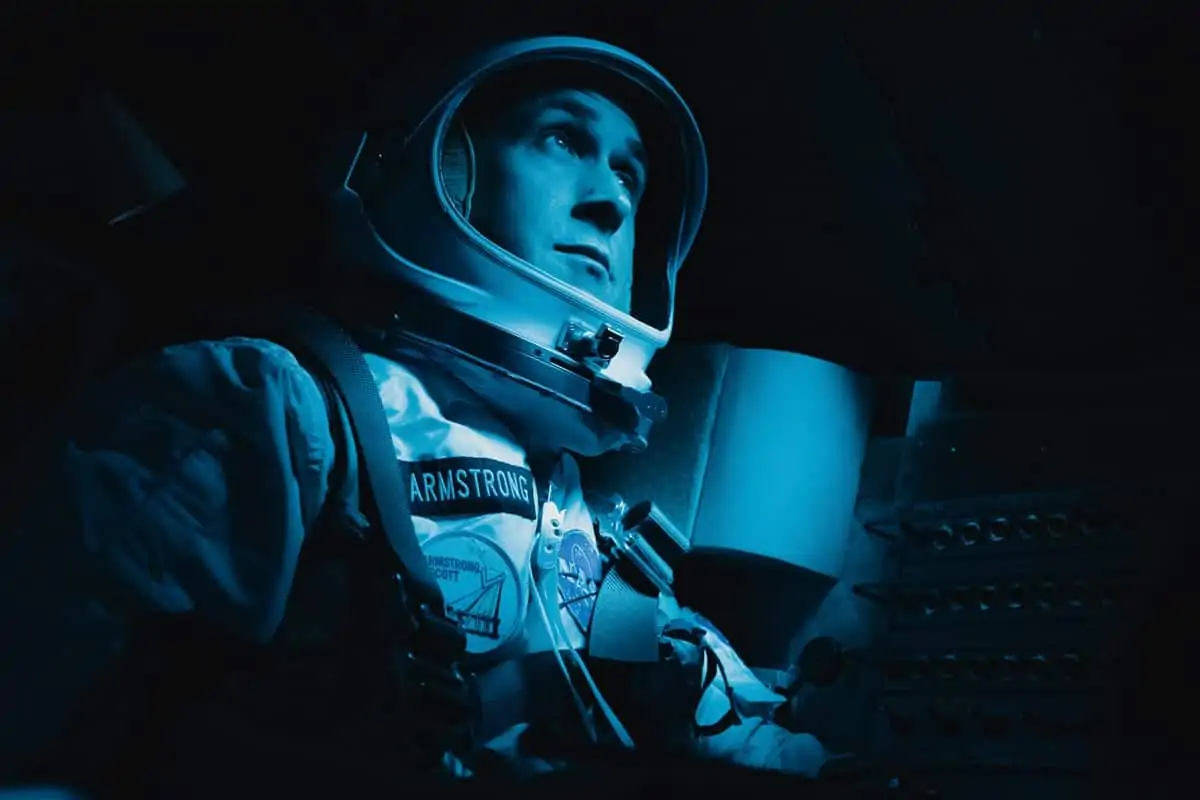MOVIE MAGIC AND MAYHEM
Damien Chazelle’s Babylon transports cinemagoers to 1920s Los Angeles and uncovers a world of decadence, freedom, and chaos traversing the heights of Hollywood to the depths of depravity. Reteaming with Linus Sandgren ASC FSF following their La La Land and First Man success, the filmmakers adopt bold techniques to create a raw image.
Embarking on a cinematic journey to Babylon, audiences are taken on a wild ride through a period of filmmaking that has rarely been depicted on screen. Writer-director Damien Chazelle’s (La La Land, First Man, Whiplash) creation shines a light on Hollywood’s early days when the industry moved from the silent era to talkies. Set in 1920s Los Angeles, characters at the heart of the story include a young dreamer trying to break into the movie business, Manny Torres (Diego Calva); a drug-addicted and unknown actress also trying to get her big break, Nellie LaRoy (Margot Robbie); silent movie star at the top of his game, Jack Conrad (Brad Pitt); and virtuoso trumpeter, Sidney Palmer (Jovan Adepo).
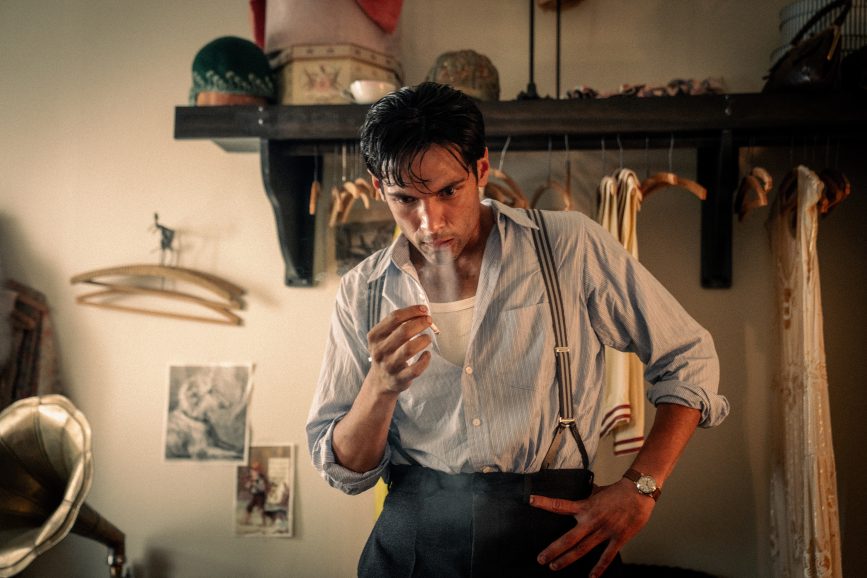
Introducing the film at a screening at Ham Yard Hotel, London – which houses Chazelle’s “favourite screening room in the world” – the director said: “This is set in a period there are a lot of misconceptions about. Many people grew up thinking of old Hollywood as this quaint, civilised place that was always glamourous and elegant. And in many ways that was a manufactured reality and an illusion that came to supplant the reality of the pre-sound Pre-Code Hollywood in the film which was very much informed by research. It’s utterly insane and a bit of a ride!”
After 15 years of research and world-building, Chazelle wanted the film “to look under the microscope at the early days of an art form and an industry, when both were still finding their footing”. He liked the idea of looking at a society in change. “Hollywood underwent a series of rapid and at times seemingly cataclysmic changes in the ‘20s, and some people survived, but many didn’t. In today’s terms, we’d call it disruption. You look at what these people went through, and it gives you a sense of the human cost that accompanied the kind of ambition that attracted so many people to Los Angeles at that time. There’s a darker side to the story of that transition than I’d seen before. It went beyond the arrival of sync sound to include a host of new moral codes – finally culminating in the Production Code of the ‘30s – and the reorganisation of a more free-form, unregulated community into the global corporate industry that we know today.
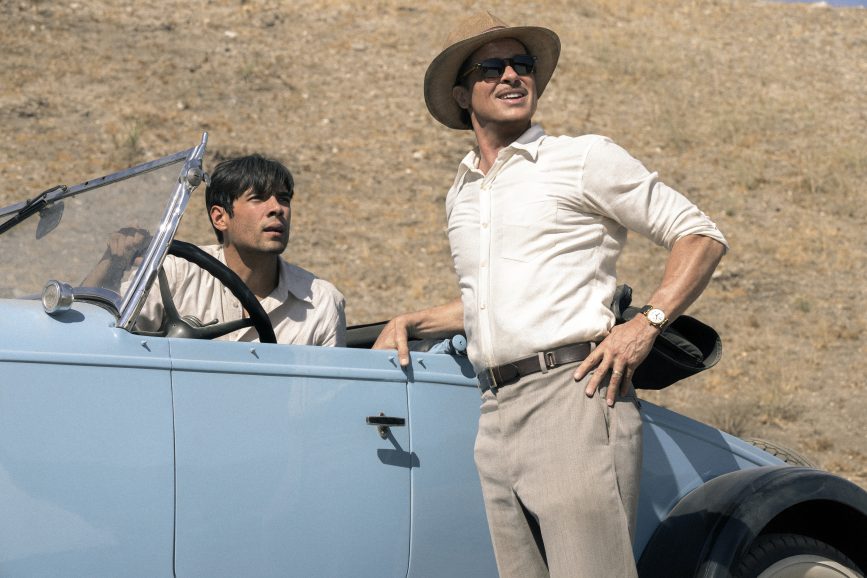

“Coinciding with all of this is Los Angeles morphing from a mostly rural desert town at the start of the ‘20s to one of the world’s major megalopolises by the decade’s end. A lot of gleaming new buildings and soundstages rose from the ashes, but the human wreckage was considerable.”
In 2018 and 2019, to spark creative inspiration and discussion, Chazelle and producer Matthew Plouffe organised private screenings of 35mm prints of films such as Orson Welles’ Citizen Kane, Francis Ford Coppola’s The Godfather Part II and Apocalypse Now, and Martin Scorsese’s Goodfellas. Closer to prep, collaborators who would help create Babylon – including cinematographer Linus Sandgren ASC FSF who lensed Chazelle’s La La Land (2016) and First Man (2018) – were invited to screenings of additional films such as Roman Polanski’s Chinatown, Terrence Malick’s Days of Heaven, and Paul Thomas Anderson’s There Will Be Blood.


When Sandgren received the script while shooting No Time to Die, it stood out as unique in terms of tempo and tone. He found the “chaotic world it focused on intriguing. On one hand, it was about 1920s Hollywood, but it was also about expressive characters, so Damien adopted an extreme approach with an added tone of humour rather than being completely realistic.”
Delayed by a year due to the pandemic, principal photography ran from July to October 2021. Following shooting commercials and Adam McKay’s Don’t Look Up, Sandgren began prep on Babylon, initially discovering Chazelle’s motivations for making the film. These informed the cinematographer that the camera needed to reflect the widespread chaos surrounding the early days of filmmaking while also capturing intimate moments between characters and aspects of their contrasting lives.
“He wanted to explore Hollywood as being a miniature Los Angeles and Los Angeles as a miniature America,” says Sandgren. “The story also charts the rise and fall of characters and of an era.”
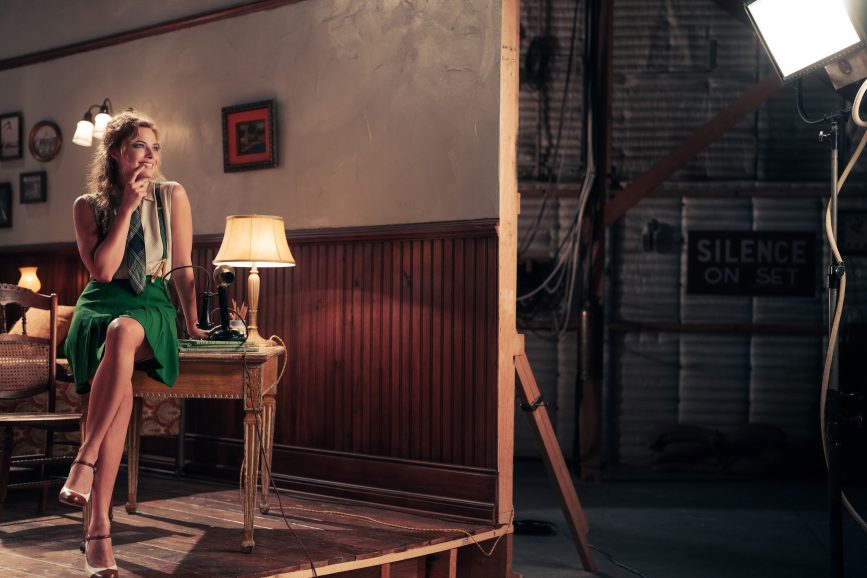
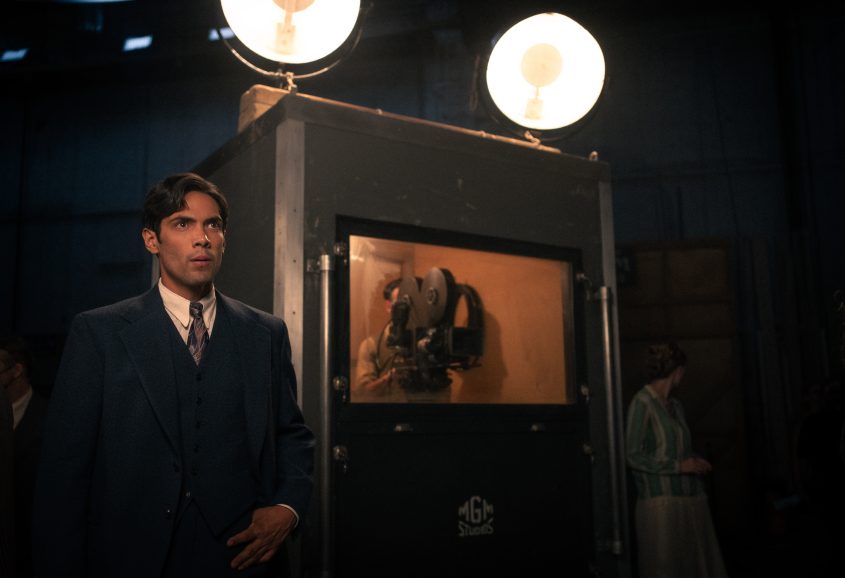
Endeavouring to capture a gritty and filthy world, Chazelle wanted to see past the polished, glamorous Hollywood. “He wanted to find the emotional truth of how it must have felt back then,” says Sandgren. “Everyone has yellow teeth and dirt under their nails, even Brad Pitt and Margot Robbie, so the audience can feel the grit of that world. Damien didn’t want it to feel like a typical period film, polished or stylised; he wanted it to have a raw truth.”
The director knew it should be shot anamorphic to capture a wider field of view and on 35mm film, believing it to be the most appropriate, honest format for an epic portrayal of Hollywood. “To me, LA is an anamorphic city. A widescreen city,” he says. “The horizon feels like it’s receding before your eyes, and I wanted to capture the epic nature of that vision that was sort of the promise of America at that time.”
Sandgren believed achieving a naturalistic look through lighting sets as realistically as possible was appropriate whilst also adopting a more impressionistic approach and capturing characters’ eyes in an expressive way through lens and film stock choice. In line with this, production designer Florencia Martin conducted detailed research, studying sets from the period and silent movie stages constructed outside in the desert.
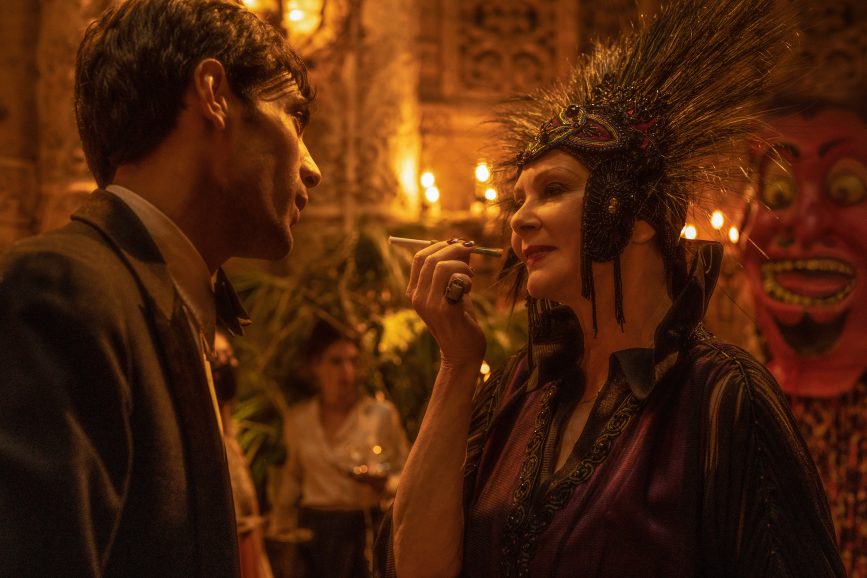
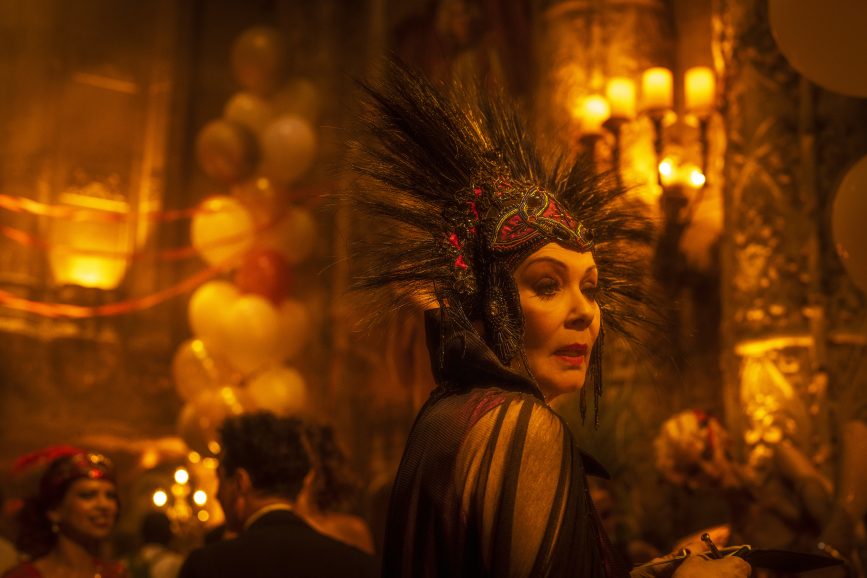
Knowing Chazelle did not want to make a quaint-feeling movie allowed Martin to look at what really happened in terms of the birth of Los Angeles as a city and a culture. She elaborates: “There’s the birth of so many things, including cinema and Hollywood as we know it now; there’s a city expanding incredibly rapidly and voraciously; there’s new technology colliding with old methodologies; there’s freedom and opportunity, but also excess and recklessness. There’s also a level of drug use – especially cocaine – that I think surprised all of us. So, all of that spurred us to tap into a deeper level of grit and reality, with locations and drugs and sex and how people interacted with each other, so that it became a complete vision.”
Chazelle wanted some scenes, such as those shot in the desert, to feel unbearably hot. “To convey a feeling of heat, and portray the contrast of characters’ lives, we decided the exterior should always be really bright,” says Sandgren. “And interiors would be dark in contrast, often with closed windows and nothing softening harsh sunlight coming through.”
To achieve expressive visuals, Sandgren push processed the film, enhancing contrast and colour, and creating some grain. “Even though it’s an anamorphic CinemaScope movie, this made it grittier and added more attitude. If it’s dark, it gets really dark, and if it’s bright, it gets really bright,” says the cinematographer, who was more adventurous with exposure than usual and embraced anything that looked too bright to “let it be part of our language.”
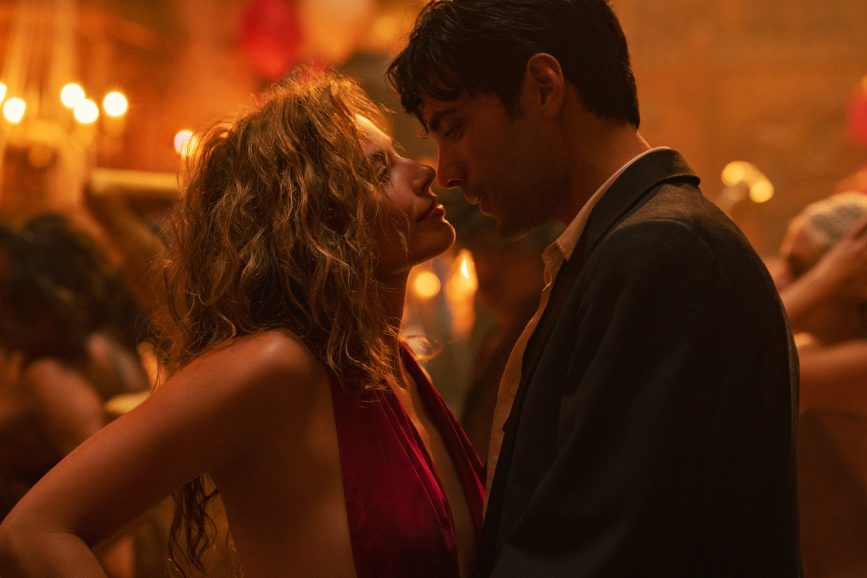
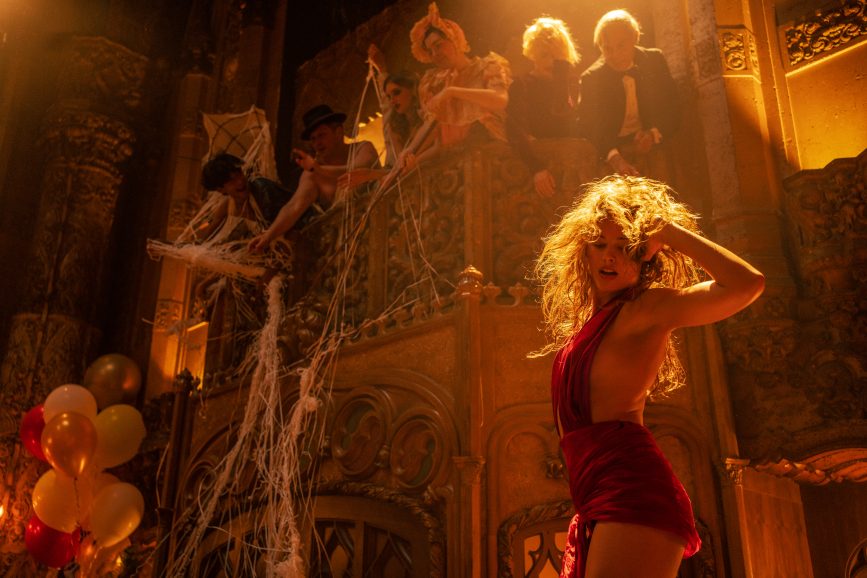
He assigns the success of his collaboration with Chazelle on La La Land, First Man and Babylon to their shared desire to “start with a blank page” each time. When getting to know the director shooting musical romantic comedy La La Land, at first Sandgren thought “he was obsessed with films about music. But then he told me he wanted to make a handheld, documentary-style film about Neil Armstrong [First Man] which was a departure from La La Land in style and the most appropriate way to tell that story because it’s a realistic film.”
This fresh approach to filmmaking supports Sandgren’s view that a director should avoid adopting the same tone in every film as “a filmmaker’s goal is to look for what’s best for the movie, so you’re still affecting the outcome with your taste or natural instincts.”
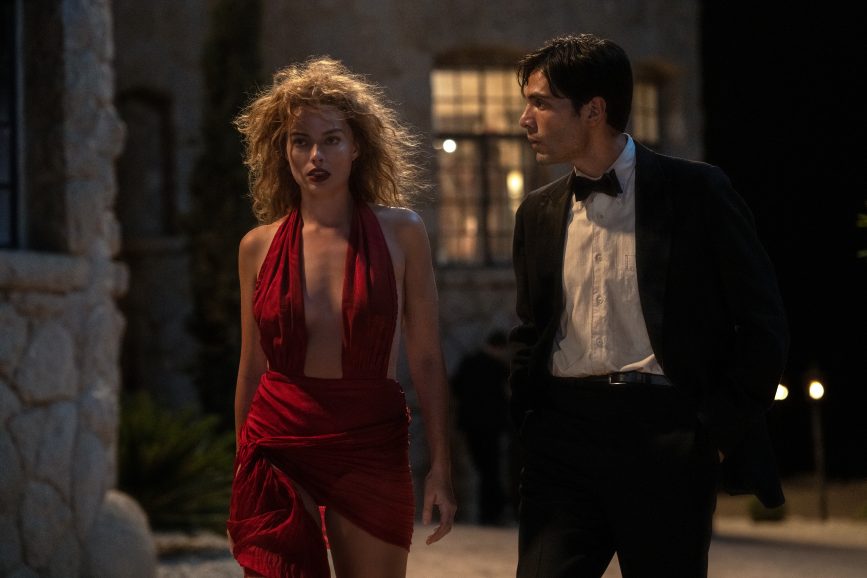
The look of each of their creations has been built up gradually in prep, with Sandgren reacting to Chazelle’s idea. On this occasion, they discussed more chaotic scenes first such as the opening wild party sequence at studio mogul Don Wallach’s mansion. Chazelle wanted it to feel like an amalgamation of La La Land – which follows the relationship between a jazz pianist and an aspiring actress in LA – and Chazelle’s 2014 gripping psychological drama Whiplash, lensed by Sharone Meir and depicting the pressures faced by a drummer.
The party scene features playful moving cameras engaged in the chaos and establishing many characters in one take. “But at the same time, multiple cuts in a few seconds, like in Whiplash, and work rhythmically with it,” says Sandgren. “Although it’s not a musical, Damien still had that idea of whole sequences cut to music.
“He doesn’t think in a conventional way, so in Babylon some scenes might just be about filmmaking, and not so much about the characters. But then he switches to focus on the hecticness of the story and speeds up by cutting to shots of wheels, driving cars, and repeat shots, increasing tempo.”

Emotional connection
Despite their work being created ahead of the period the film is set, Sandgren was influenced by Impressionist painters and their approach to dramatic lighting or sunsets. “The way Swedish artist Anders Zorn painted facial expressions sharp, but the rest of the image is almost out of focus and super rough, made an impact on me,” he says. “The light is naturalistic, but there’s a lot of expression in the images. They capture the character’s soul, and it was inspiring to see how where they stand in the light creates an emotional connection.”
This motivated him to combine naturalistic light with dramatic exposure to create a raw image in a sequence tracking with Manny as he exits the party and finds free spirit Nellie dancing outside at dawn. “As she leaves, we push in on Manny’s face to capture his admiration. That shot in the beautiful early morning romantic light tells us so much about her and him and allows you to connect emotionally.”
While he did not create a mood board of paintings, still photography, and reference images, as he normally does, Sandgren was inspired by Martin’s mood boards and work. “Florencia is so creative, especially with budgets. She created great variation between locations, so we got a lot of looks in the film,” he says. “Working with the production design team is so important, from the colours and set textures, through to curtains and practicals, especially as light didn’t really come from separate sources; we were relying on windows or practicals a lot.”
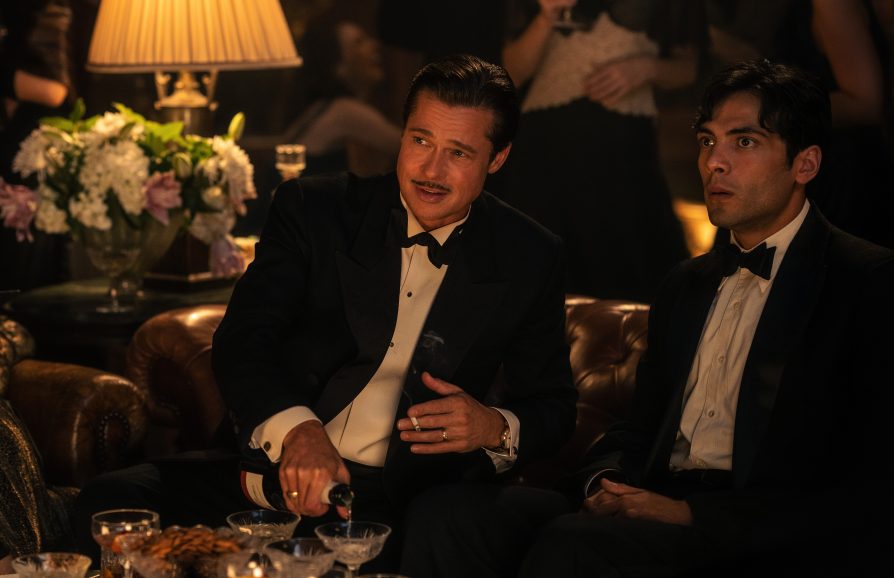
Chazelle wanted sets and locations to feel real, shooting on location if possible to showcase the many authentic locations existing in LA. “Florencia had an insane challenge of not just recreating Los Angeles of that time but also recreating each studio experience,” says Chazelle. “And within that, we were recreating each of the fictional movies’ sets, so you’re talking about sets within sets within sets.”
To recreate the feel of Los Angeles before it became a sprawling city, supervising location manager Chris Baugh often ventured deep into the San Fernando Valley and outskirts of Los Angeles County and beyond into the desert of Southern California. “Damien wanted to have 360-degree views in his exterior shots, but Los Angeles is so over-built now that it’s impossible to get that in Beverly Hills or Bel Air,” says Baugh, “so it was often like a scavenger hunt.”
The movie theatres the crew filmed in were built by Charlie Chaplin and some significant scenes were shot in Busby Berkeley’s former house. The Kinoscope studio lot where Nellie’s first day of shooting takes place was built from scratch on an empty dirt field in Piru, north of LA, and modelled on open-air studio lots and sets of the period. “There were 700 extras in Jack Conrad’s film shoot scene which we filmed in Piru’s 40-degree heat, so it was a challenge for everyone,” says Sandgren.
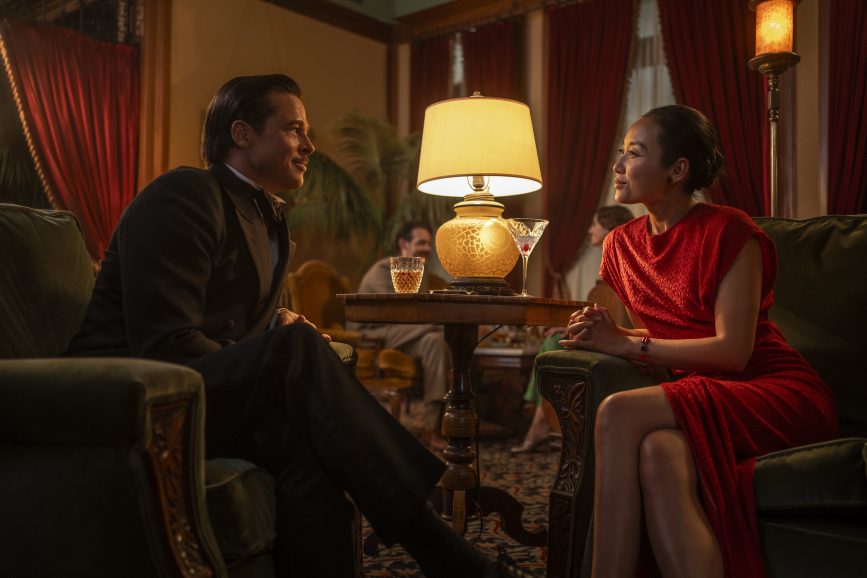
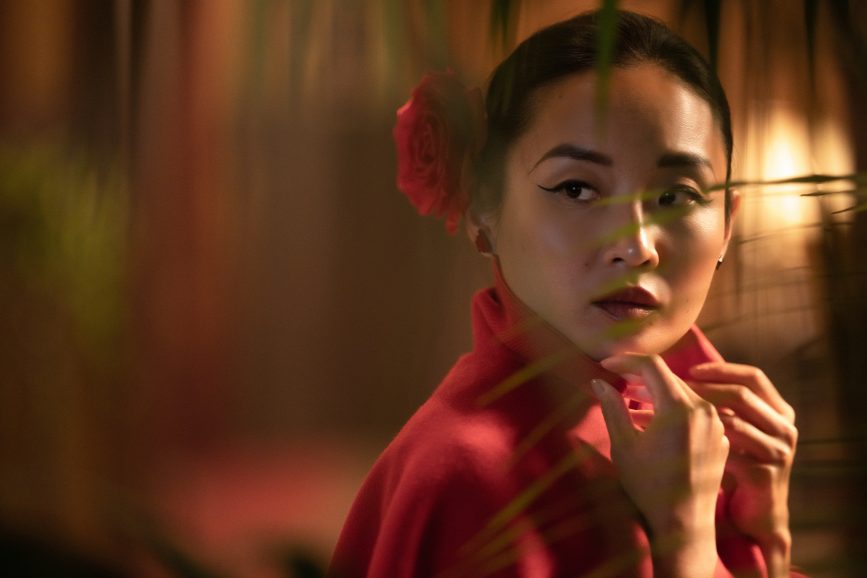
Soundstage interiors and exteriors in the film were shot at Paramount and the rainy and night-time New York streets and Warner movie theatre in New York were shot at Paramount’s New York streets backlot. One of the few locations shot on stage that was not intended to look like stage work was the jazz club Sidney Palmer and his band play in towards the end of the film. Originally intended to be shot on location, it logistically fitted better into the last day of shooting when the cast and crew were on stage.
One of the first locations scouted was the setting for the pivotal first party sequence, packed with writhing bodies and Hollywood’s biggest stars. The exterior was shot in Lancaster, north of LA, and Martin and Chazelle found a ‘20s-style lobby at Ace Theatre in Los Angeles for the interior featuring ornate moulded plaster walls.
The location was not without limitations as it was not possible to get a crane inside to accomplish the ambitious sequence taking the audience on a raucous ride through the party. “Damien had high ambitions but there were logistical problems, especially as there were so many extras and no large entrances to the room, so we had to think of alternatives,” says Sandgren.

“We briefly considered shooting on stage, but we would have needed a three-storey set which is unusual in the US. We looked at handheld in place of a crane but that wouldn’t allow us to fly up and see everything from above.”
Cable cam was the most suitable solution as the filmmakers realised if they used a two-point rather than four-point system when the shot pulls back, it would allow them to shoot lower than the guests at the party, feeling like low mode Steadicam.
Instead of shooting the sequence in a single take, a whip pan to two characters fighting is used to cut to an ambitious single Steadicam shot which required a day of rehearsal and 20 takes compared to the 10-take cable cam shot. “So much of it is in the timing,” says Sandgren. “Damien really wanted to dig into all the characters and focus on one person and then another in the next take using Steadicam. Sometimes one person might be in the wrong position, so we’d need to shoot another take.”

Contrasting calmness with chaos
Babylon is a tale of contrast, from the drugs and sex of late-night parties to quieter moments of solitude, and from film stars’ extravagant homes and cars to the poverty found elsewhere in LA’s landscape.
Sandgren admits that when working with such a script it is easy to focus on the moments of excess. “But then we discussed the more intimate or still scenes as prep evolved. My instinct is to avoid conforming all scenes into one look but to be reactive. If a scene is still, there’s no reason to move the camera, but if you move you need to know why you’re moving, perhaps because something suspenseful has been said and you push in on a face.”
While tempo was achieved through ambitious tracking shots, slow creeping movements or whip pans, movement was also dictated by location and budget. “I never start with the tools; I always begin with how dynamic we want to be. Do we need to move faster? If so, sometimes a Steadicam is easier because the operator can run with it instead of swinging a large arm,” says Sandgren. “If we had all the money in the world, we would have had a Steadicam and crane every day. But we looked at which parts of the script really needed a crane or where it could be achieved with the little Miniscope 7.”

Little room was left for improvisation, other than some handheld shots. At each location, the filmmakers determined where the camera should move using viewfinders and a specific crane scout confirmed if the right crane was being used and whether it could move in the desired way. Every shot of the wild and wonderful party scene was planned precisely using floor plans created by Sandgren with camera positions and movements marked up to aid efficiency on shoot day.
Visual language was largely based on working with a controlled yet moving and playful camera reacting to the scene’s tone, with lighting also aligned with location and mood. “In the scene where Nellie takes on a snake and sequences towards the end which are more negative in mood, we chose a handheld, more messy and chaotic style instead of using dolly, cable cam or Steadicam which were reserved for earlier playful scenes with a more positive energy when characters are creative and making movies,” says the cinematographer.
Much of the film was captured using a single camera, with Sandgren operating A camera and Brian Freesh shooting almost all Steadicam shots and Ari Robbins SOC shooting some Steadicam towards the end of the shoot. A Chapman Miniscope 7 with a Mo-Sys remote head was the go-to rig as it was easy to bring on location, with dolly grip Michael Wahl responsible for most of the moves.
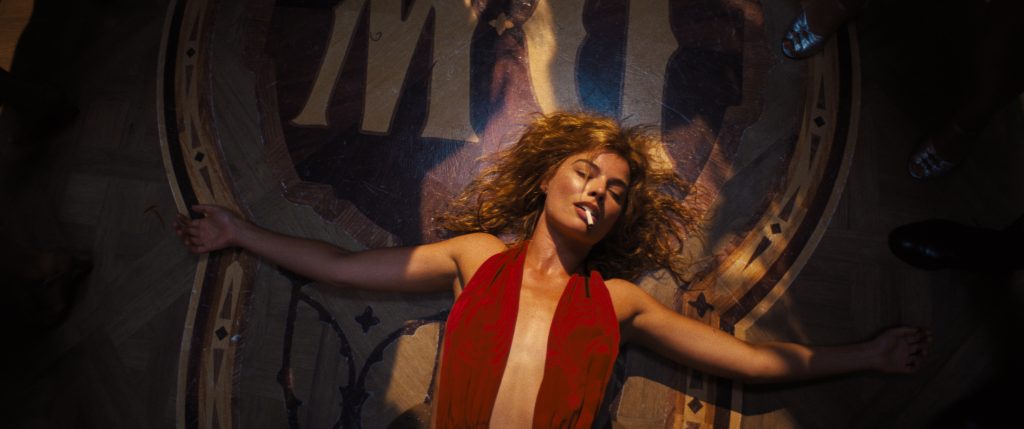
Bigger crane moves for sequences such as a oner of Nellie and Manny exiting the party at dawn, captured using a Scorpio 45, were carried out by Technocrane operator Bogdan Iofciulescu who also worked on La La Land. Normally one operator is on the pickle and the other on the arm when working with a 45-foot Scorpio crane, but Iofciulesci operated the arm and pickle, while Sandgren was on the head.
Technocrane shots captured on location in the cinema were difficult to achieve, requiring pulling up high in the ceiling before pushing down and in. “We had to build platforms across seats which we didn’t want to see as we pulled up to the ceiling,” says Sandgren.
“For the end sequence when Manny’s on the cinema balcony, the camera booms down and moves through the audience before booming up to the ceiling. We look down on everybody and then push into his face. That’s all in camera which is impressive as it starts so wide and then pushes right in, using a Cooke anamorphic 35-150mm zoom. We started using a 75 on his face, booming down, and as we pull up into the ceiling, we widen to a 35. As we push back into his face, we slowly zoom as we track to a 140 on his eyes.”
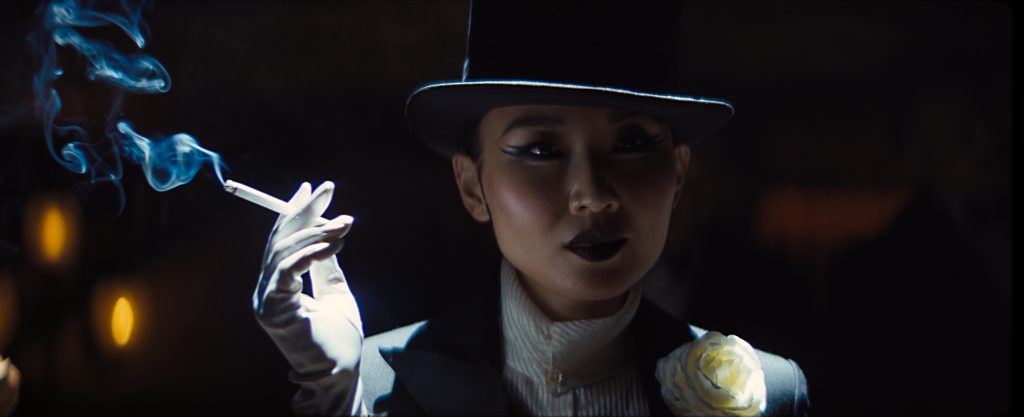
The scene in which Sidney is offered a movie role required a pull back using a 45-foot arm that was carried out with such momentum, the handle holding the dolly of the crane broke and the crane jumped off the track.
Cutaways to shots of loading film, projectionists, and people partying were realised thanks to Sandgren’s longtime collaborator and B camera operator/second unit DP, Davon Slininger. “On First Man we shot two cameras all the time. Babylon was more a one-camera production but in the same location Davon would be elsewhere shooting inserts that could be used in the fast cut inserts which played a big part in this film,” says Sandgren.
Meanwhile, shooting anamorphic interiors and night-time scenes at a T-stop of 2 was a demanding task at which 1st AC Jorge Sánchez excelled. “Jorge works in an old school way when pulling focus, not with a monitor. It’s the ninth film we’ve made together and he’s just exceptional,” says the cinematographer. “When we did the 70mm print at Fotokem, the project manager commented on how amazing the focus puller was. There were many shots pushing in on faces and they were so sharp.”

Other essential members of the crew included key grip Anthony Cady who Sandgren has worked with multiple times, gaffer Tony Bryan, and rigging gaffer John Manocchia who he collaborated with on La La Land. In line with the aim for naturalistic lighting, Cady and Manocchia set up large lights outside windows so all that was needed was tuning exposures.
“John pre lit everything so when we arrived, we didn’t need to spend long finishing the lighting,” says Sandgren. “We had half an hour to get ready to shoot when we arrived on set, so the pre light was crucial to stick to the schedule when creating such an ambitious film requiring multiple scenes to be shot with little time.”

Taking stock
Sandgren paired Arricam LTs, supplied by Camtech, with Atlas Orion lenses which he used on Don’t Look Up and enjoyed their close focus and sharpness to the edge of the lens. “You can shoot wide angle without crazy distortion to the barrel. I wanted them to look less sharp and more bloomy, so they were modified.”
An Arriflex 435 Xtreme captured the chaos of some of the scenes when several productions are shot simultaneously on a silent film set in the middle of the desert. Cameras from the period were used as props in those sequences which included the filming of a battle scene and another which depicts the efforts to capture the perfect shot of Jack and an actress playing Isabella of Castile kissing as the sun sets behind them.
“The vintage 2709 Bell and Howells cameras were also functioning and to a degree we used the black-and-white footage of Jack’s kiss on the hilltop and a scene where Nellie is crying. We wanted to capture those using hand cranked older cameras at the same time as we shot our film’s footage, so we used a 3D rig as a prism and the Arriflex 435 camera with a spherical Super 35 silent mode setting and B-Speed Zeiss Primes to make sure it was in focus, shooting on Eastman Double-X 5222.
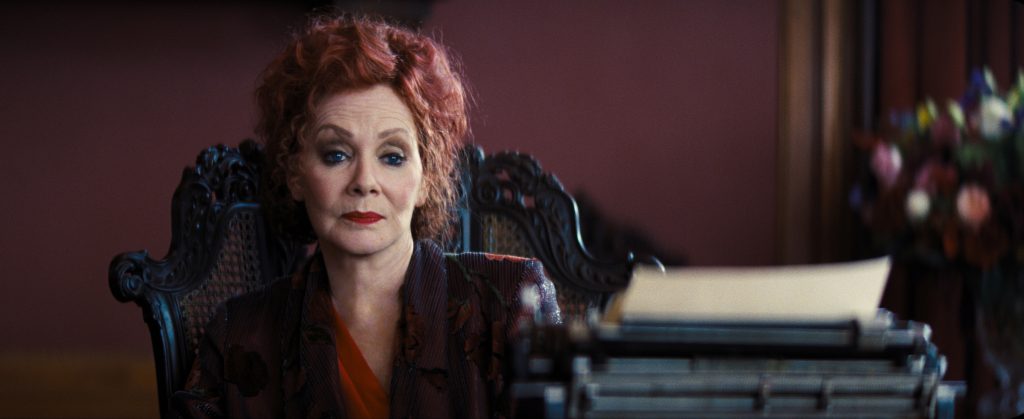
“We didn’t want to hand crank one camera and the other camera get an unstable image, so we altered the frame rate of the 435 electronically with the control unit to mimic the silent movie style.”
An advocate for shooting on film, Sandgren, like Chazelle, felt 35mm was the only route for a production portraying such a distinctive part of Hollywood’s filmmaking history. “When shooting digital there are limited factors that can affect the image because the digital sensor is the same on all cameras, but film adds another dimension to your look. If you pull process, you get a softer less colourful image while push processing enhances and shifts colours. This is all down to how the film stock sees the world in a way you don’t with your eyes versus how a digital camera sees colour tones.”
Skin tones “really shine on film” which Sandgren believes “could easily feel beige” in digital capture. “When you look closely at footage shot on film so many colours make up the skin colour – purples, blues, reds, and yellows. It’s a more complex colour palette that’s then enhanced in the lab.”
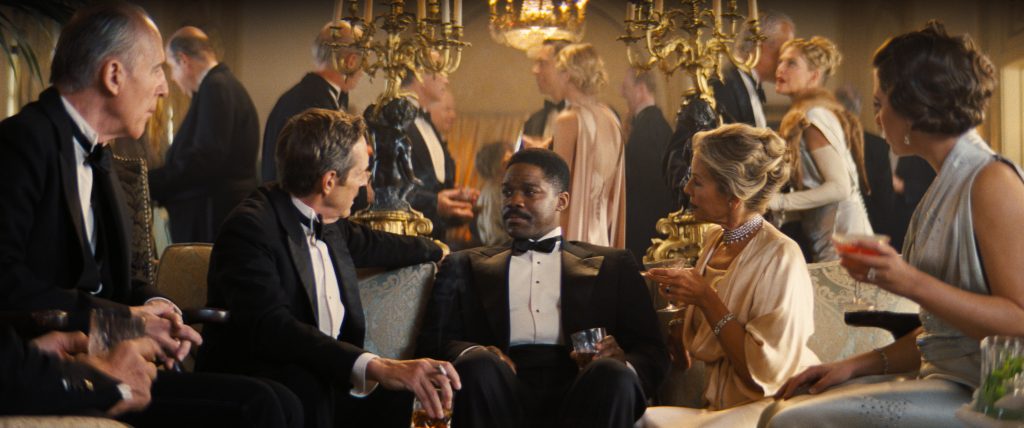
While showcasing multiple worlds, the filmmakers avoided repeating colours whilst keeping the exposures “consistently raw, contrasty, and trashy”. Sandgren found it “fun moving a little bit outside of what is proper.” Day exterior scenes were overexposed three or four stops and shot on 35mm Kodak Vision3 50D 5203, push processing one stop. This techniques of overexposing and push processing, following extensive experimentation, created the unique look of the desert sequences.
Even when shooting in full sun in the desert, the cinematographer would expose for what was in the shadow to produce a heavily overexposed pale look. “If I had normally exposed the film stock, it would have required quite some work in the DI to mimic a look that still wouldn’t have been the same. Shooting digital, would have needed a lot of work in post. Why not just get it the way you like in camera?
“The 50D has a yellowy pale tone, and the daylight stocks have a creaminess to them which we liked for the desert scenes. But if it had been a cloudy day, I would likely have gone with a tungsten stock as if it’s cloudy the creamy daytime stocks can look muddy, and not bring out the blues.”
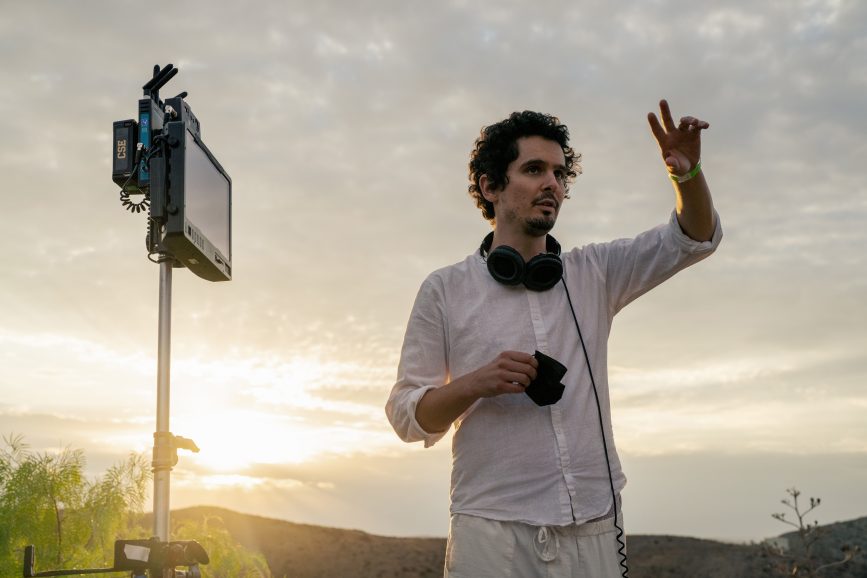
Most day interiors were shot on Vision3 250D 5207, with some scenes shot at 500 ASA and wide open as if they were being captured in the middle of the night. “In some sequences the characters were dark, but the doors out to the exterior were completely blown out, so it’s not a proper exposure, but that was the attitude throughout the film.”
This was further enhanced by creating custom distorted lenses, modified by Atlas using metal powder to scratch the surface, so they would bloom more and create a visual style in line with the Babylon world and characters.
Night interiors and exteriors were captured on Vision3 200T and Vision3 500T 5219, with all stock choices driven by exposure. “I used the 500T most because I love that film stock – it always works, and I don’t like to filter much which made it a perfect choice,” says Sandgren.
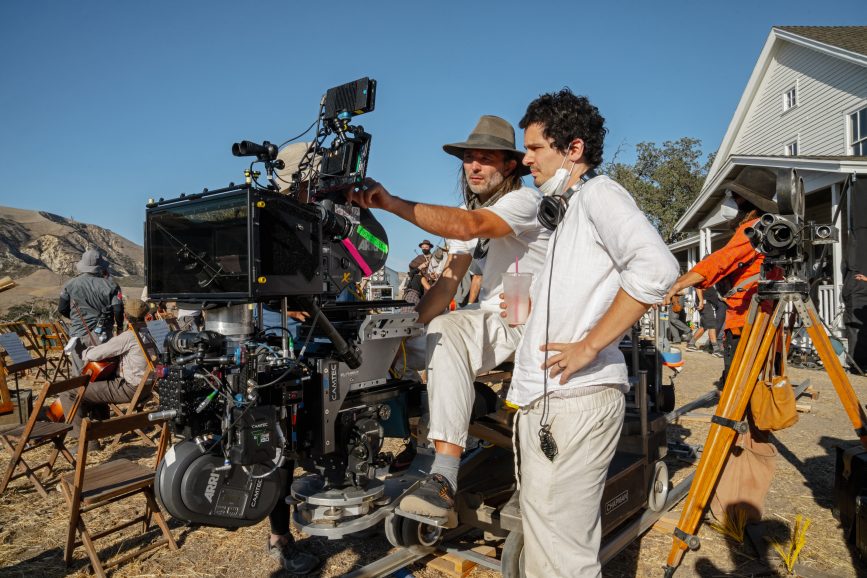
Creating the look largely in camera is “comforting” for Sandgren who, when shooting commercials digitally, feels he needs to wait for the final colour grade to finish the look. “When you work on film, I get the dailies back and even though I know with experience how it should look, the film just gives me more of something I couldn’t predict which helps me appreciate and embrace the image.”
On Babylon the cinematographer worked with Matt Wallach, digital intermediate and dailies colourist at Company 3, who “aims to be true to what the negative brings him and then adjusts the contrast to land it where it needs to be”. Since No Time to Die, Wallach has done dailies and DI for Sandgren, speeding up the DI process because he already knows the footage and can take the CDL from the dailies and make adjustments to level out the footage when the film is cut together.
Not changing the look or overworking the image was key as Sandgren enjoys embracing and appreciating whatever flaws appear. “We might let the sky burn. Matt was important in that workflow, especially when the aim was to capture as much in camera.”

Free spirited filmmaking
Chazelle and Sandgren explored how black-and-white films were shot and lit at the time to inform the sequences depicting filmmaking and shoots in the desert, researching when they used arc lights or tungsten. “Florencia had a lot of input too and studied the set dressing. It was also interesting to see how photography back then was quite inspired by Impressionist painters in terms of it being naturalistic. It was the studios who then made things look more artificial through over lighting actresses’ faces to make them look prettier,” says Sandgren. “We wanted to light sets the way they did so it would be period correct.”
Exterior studios such as those depicted in the desert scenes would use silks to reduce sunlight and arc lamps to light actors. Sandgren wanted to mimic this but did not have period correct arc lights. “They were a little later – around the ‘30s or ‘40s – but we had the correct housings which Sam Chibata at Warner Brothers modified, adding 18K HMIs inside the big arc lights. We looked at them as our key light sources – the whole set was like a key light.”
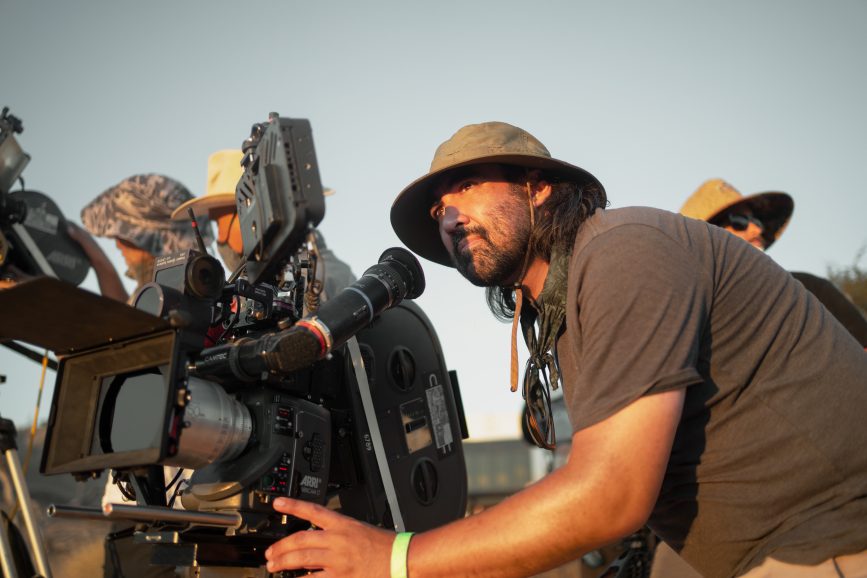
Either 20Ks, Dinos or tungsten key lights were used, and occasionally HMIs, for the sun, with LED fixtures such as SkyPanel S360s used for fill as Sandgren avoids working with LED as key lights “as they don’t have as rich a colour space”. Three generators were required to run the HMIs on the sets in the desert film shoot scene, with the cables hidden under the sand to allow 360-degree shooting without modern cables in sight, while additional period-correct cables used by the filmmaking characters in the scene were in view.
“For interior scenes, we normally lit the whole room and shot without really moving lights around. So, we put actors in position and tried to put the camera in positions that gave us the lighting we wanted,” says Sandgren.
When shooting the first party scene with cable cam, the walls could not be touched which presented problems when trying to hide lights. “There were so many people, it was quite a small space, and we couldn’t light them all with only practicals, so we used a trick I was shown by production designer Guy Hendrix Dyas of using small truss welded to a plate. The truss is covered with scenic that mimics the scenic of the set, so we could attach lights above frame that could backlight or spotlight everyone in the party, with everything adjustable on dimmers from an iPad.”

A separate key light – a hard top light of PAR cans – was used for the band so “everything didn’t look the same”. When performer Lady Fay Zhu appears, the lights are dimmed and only a few practicals were used, and Lady Fay has a follow spot only as a key light with no fill. When Manny and Nellie leave the party in the morning, an HMI shot some daylight down into the set and balloons were used to “clean up some of the warmth as a top fill light”.
Mirroring the free spirited and imaginative nature of some of its characters, Babylon was a refreshing and liberating creative experience. “Normally I would regularly look at my light meter, but I did this less often while making this film. I was more ruthless because the attitude was to let the visual be harsher,” says Sandgren.
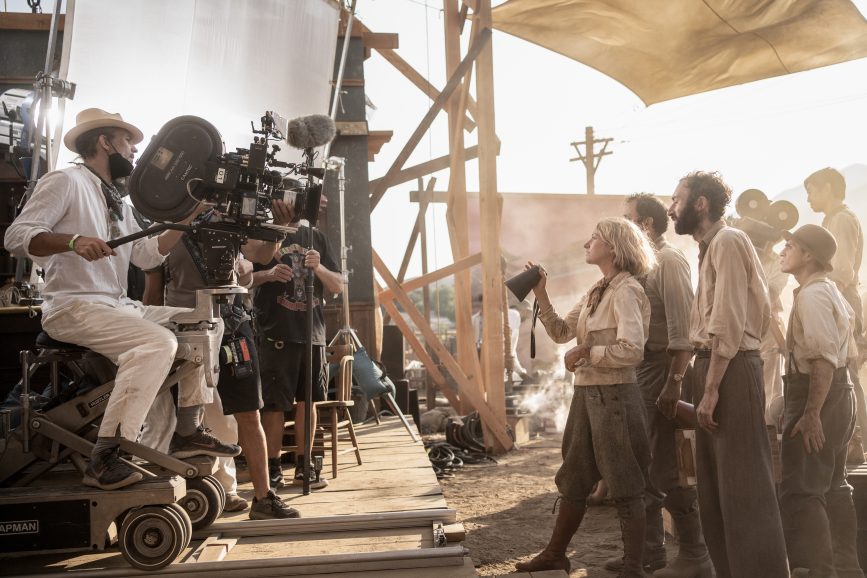
“When I shot Promised Land with Gus Van Sant, he wanted no monitors on set and for us to not be too prepared. When we came to set, we’d rehearse with the actors and figure out shots without extensive planning because he wanted to capture the authenticity of the moment and the scene in a fresh and documentary style. I learnt so much from that as sometimes you can overwork things in prep so less life is added into the visual.
“It’s always exciting to do something outside your comfort zone which on this occasion was being impressionistic to find an emotional connection through the camera. I rolled with things much more than normal and was more brutal to the film which I enjoyed. I was much bolder with exposures and let the film be freer.”
